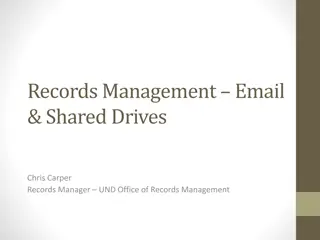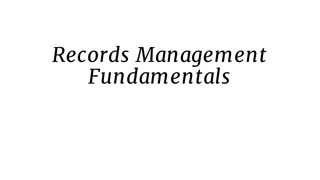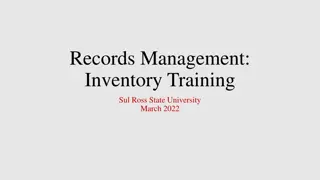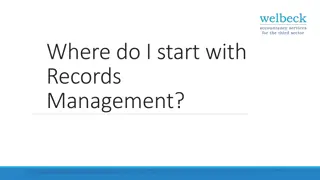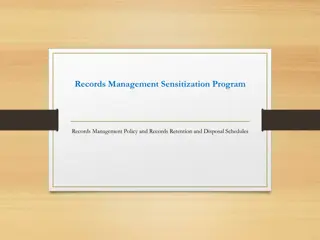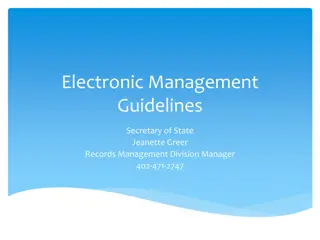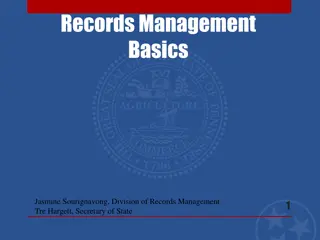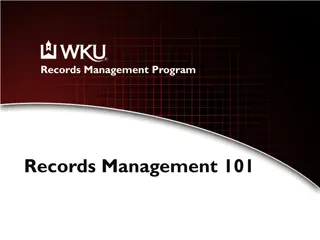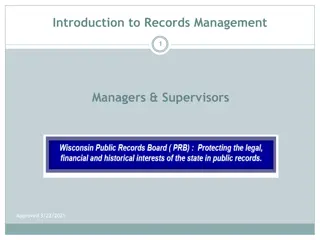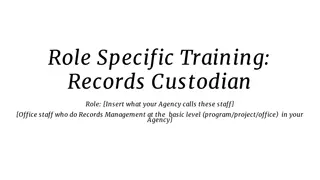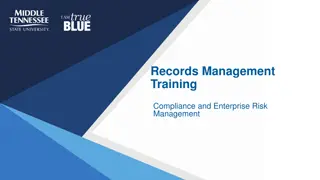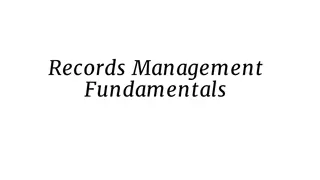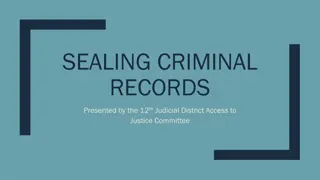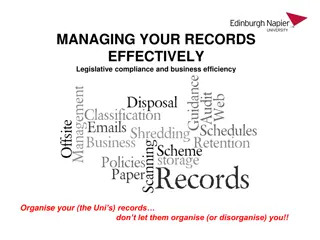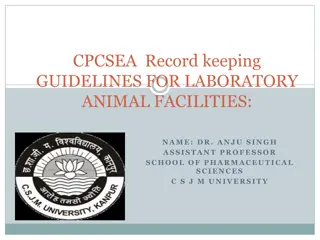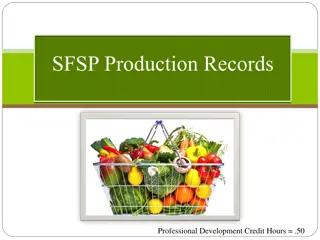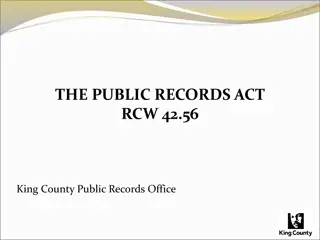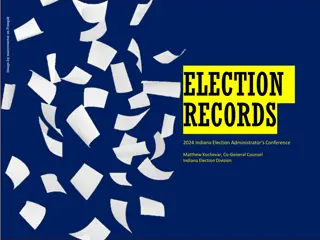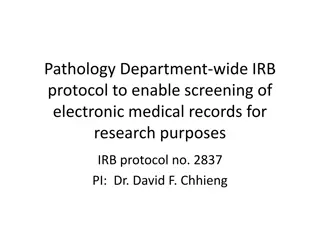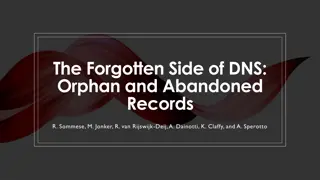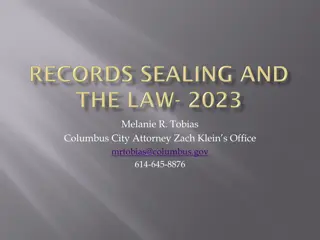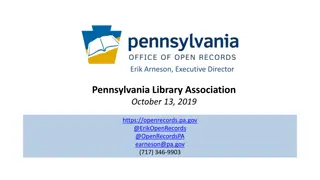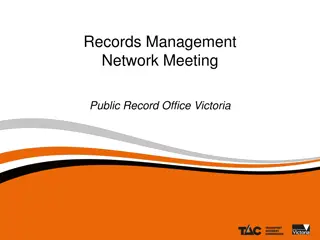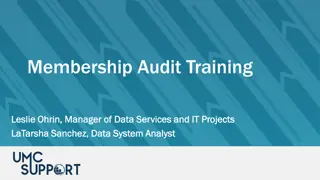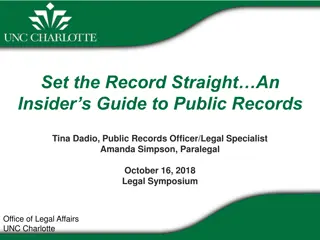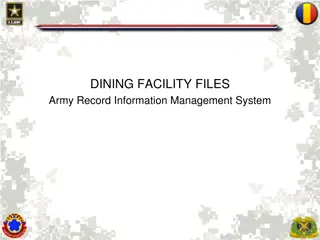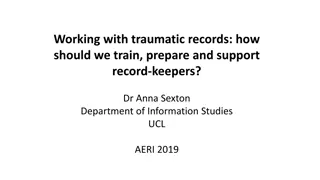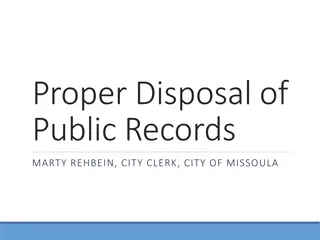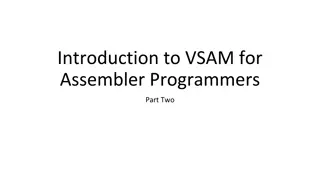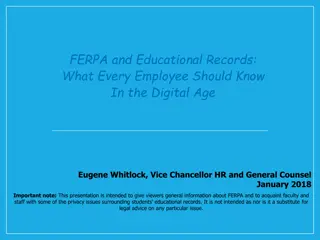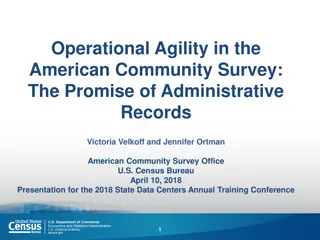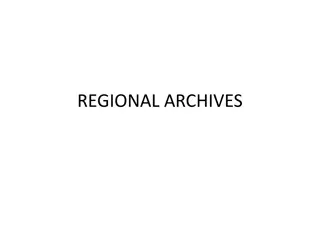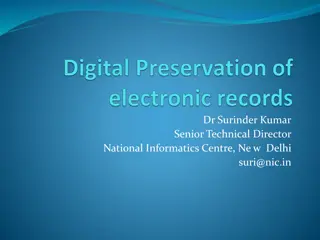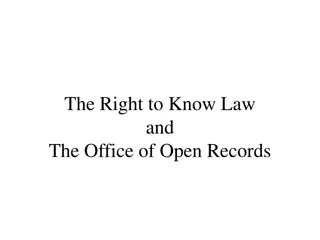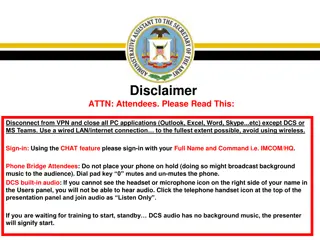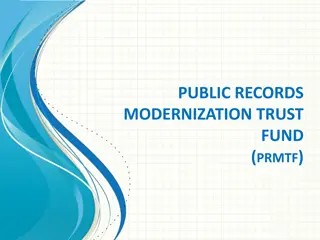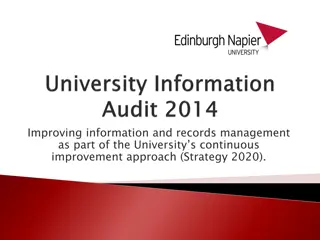Comprehensive Records Management Training Overview
Explore the world of records management training, compliance, and enterprise risk management through this detailed guide. Learn about the importance of maintaining internal records management programs, implementing retention schedules, and complying with regulations. Dive into coordinator responsibilities, terminology, creating new record series, and more with practical examples and tips.
Download Presentation

Please find below an Image/Link to download the presentation.
The content on the website is provided AS IS for your information and personal use only. It may not be sold, licensed, or shared on other websites without obtaining consent from the author. Download presentation by click this link. If you encounter any issues during the download, it is possible that the publisher has removed the file from their server.
E N D
Presentation Transcript
Records Management Training Compliance and Enterprise Risk Management
Objective At the end of this training, understand how to use the records database.
Why are we doing this? Tell me why!
Requirements All state agencies must maintain an internal records management program (Rule 1210-01-.03(1)). Must ensure that retention schedules are properly implemented and followed (Rule 1210-01-.02(5)). MTSU Policy 129 Results in submission of a report to the Records Management Division, TN Secretary of State s office.
Coordinator Responsibilities Why am I here?
Responsibilities Create record sets in Records Management Database. Maintain / update record series. Request destruction of record series. Destroy record series as appropriate. Confirm accuracy of records database periodically.
Terminology Words mean things.
Terminology Records Record series RDA records disposition authorization Records cut off Retention period Retention action
Creating New Record Series Creating records about records.
New records tips Start Date / End Date If you are going to be (or suspect you will be) adding records throughout the year, align to the timeline in the RDA. Simplifies storage and destruction. Unique ID
New records examples Student Records (SW-U06) non-education record Cut Off: Academic Year Retention: 5 Years Disposition: Destroy Recommendation: set up a new record series for each academic year. University Research Records (SW-U07) Cut Off: Completion, termination or suspension of research project Retention: 10 Years Disposition: Destroy Recommendation: set up a new record series for each research project. Student Records (SW-U02) education record Cut Off: Academic Year Retention: Permanent Disposition: None Recommendation: set up a new record series for each academic year.
Finding Existing Record Series Hint: They are always in the last place you look.
Requesting Approval to Destroy Existing Record Series It s the final countdown.
Warning Litigation Hold Do not destroy documents that are on litigation hold.
Final Updates Records are Destroyed Gone in 60 seconds.
Process Map No compass required.
Steps to Records Management Update and Maintain Record Set Request Destruction of Record Set Confirm Destruction of Record Set Create Record Set Destroy Record Set
Confirming Accuracy What is real?
Periodic Reviews Annually CAERM will send each Records Coordinator a list of all record series for your area. Confirm all the data related to such record series is accurate. Quantity Location Record Start / End Date Destruction Date Will typically occur in March - April As Needed CAERM will follow up on specific record series if it appears something is amiss. Retention period expired Location doesn t exist Quantity is an imaginary number.
Records Holding Report CAERM compiles the Records Holding Report for submission to the Tennessee Secretary of State s Office Includes: Number of active records. Records created. Records destroyed.
Records Audits Secretary of State s office performs periodic audits of our records management practices. Includes on-site visits.
Helpful Hints and Information Everything is Awesome.
Duplicates Duplicates aren t records. Things that aren t records do not have to be entered into the database.
Picking an RDA Do your best and look for best fit. Be consistent.
Resources CAERM site: https://www.mtsu.edu/caerm/records_management_re tention.php Tennessee Secretary of State records site: https://sos.tn.gov/rmd Email CAERM at recordsretention@mtsu.edu
Questions? Was I in the right training?


